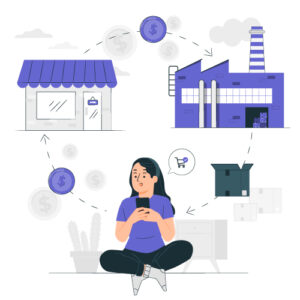
Intro to my Small Business Marketing 101
Small businesses are always a backbone to the country’s economy. They contribute to local economics by bringing growth and innovation in the community around them. I’ve spoken a lot about small businesses importance in my previous blogs. Check out here.
This blog is a series of blogs containing topics that help small marketers to grow their business digitally.
It doesn’t matter your business started ages ago or just started like a month or week ago. It’s never late to learn more about how to promote your business on internet and let your customers learn more about your business to attract and engage with them.
Finding the best marketing strategy is hard and you can’t just invest more and more money and resources to compete with larger competitors and end up with minimum sales.
In fact, At Digicue we created this guide to help small businesses to learn the strategies to grow their businesses in most common or discussed topics in the internet.
In our first Blog we learn about Inbound Marketing.
Before learning more about Inbound marketing, I want to ask a question. Would you rather have your customers search for you business or other way around?
Get Found is the first and foremost technique in Inbound Marketing.
What is Inbound Marketing?
It is a marketing strategy to attract more customers to visit your website and turn them into your leads in your business. The attracting customers maybe of many forms, like writing an interesting blog or content or about a trending product these days or events or Through social media and more.
To achieve the top in Inbound Marketing 3 simple steps need to be followed.
According to the Wiki or many marketing agencies, Inbound Marketing can be achieved by
- Attract
- Engage
- Delight

You attract prospects and customers to your website and blog through relevant and helpful content.
Once they arrive, you engage with them using conversational tools like email and chat and by promising continued value.
Finally, you delight them by continuing to act as an empathetic advisor and expert.
You might think flyers, mails and ads will get you more sales, this is called outbound Marketing. There are so many disadvantages in this marketing technique. You can’t keep track on metrics on outbound marketing because you don’t know who engaged with your products or sales. Its throwing your money in a lake and hoping someone will reach out to it. According to the stats, 200Million calls added on “DO NOT CALL” list and same goes with emails, 44% of promotional emails gets deleted without even opening and lastly, people skip ads all the time.
On the other hand Inbound Marketing helps you work smarter with your money unlike outbound or traditional marketing. It can guarantee you 10X more effective for increasing:
- Website Traffic
- Sales
- Lead Generation
- Customer Loyalty
By aligning the content you publish with your customer’s interests and needs, you naturally attract inbound traffic to your website where you can then convince, close, and satisfy them over an extended period of time.
Delight your customers
The Inbound way gives outstanding content to new visitors, new leads or even to your existing customers. Customer journey ends with the purchase of product is an old saying, today’s world we need to keep attracting and engage with New and existing customers to retain them in the business.
McKinsey’s research tells us about one thing, 70% of the customers buy products based on their experience with their buyer and how they treated them.
Companies who embrace inbound marketing continue to engage with, delight, and (hopefully) up-sell their current customer base into happy promoters of the organisations and products they love.
There are so many ways to delight your Customers. Here are some of the effective ways to delight them.
Smart Text: Provide your customers with outstanding content tailored to their interests and challenges. Help them to achieve their goals and introduce them to new products that will interest them.
Surveys: The effective way to know about your customers by asking what they want. Use this information to ensure you’re providing customers with what they’re looking for.
Socials: The most popular form of engagement with your customers is social your business. Keep track of their conversations, Listen to their queries and reach out to them through likes, comments and provide them with relevant content.
Smart Calls-to-Action: These present different users with offers that change based on buyer persona and lifecycle stage.
You might think what sort of content might get the engagement going on . Here are some of the popular forms of content to delight your customers.
- Blogs
- Podcasts
- Video
- Newsletters
- Infographics
- Images
- eBooks
- VIP Passes
- Exclusive Offers
- User Reviews
- Compelling Announcements (Free shipping, Discounts, Special Offers, Surprises)
- Humour
- Putting a fun spin
Conclusion
Obviously this is a short primer on inbound, and there’s a lot more to talk about. But if we could boil it down to the simplest possible summary, Define your audience, go where you can get leads and craft the perfect technique to attract them and build your rapport.
This sounds easy, but it takes a lot of work. Make sure you have proper analytics in place, and continue to improve and optimise your inbound funnel.
When it works, it really works. And when it really, really works, you just changed your business and promoted it to next level.



